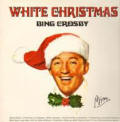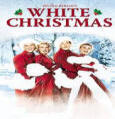  The
wide white medial
variegation of this hosta accounts for its name. It is a slow
growing plant of unidentified parentage which grows into a medium size hosta about 15 inches tall with a spread of 35 inches.
Pale lavender flowers bloom from mid-July into August but are
sterile and do not set seeds. This cultivar was registered by
Peter Ruh of Ohio in 1999 on
behalf of the originator,
"Palmer" of New York and
Gus Krossa of Michigan
who introduced it around 1971. The
wide white medial
variegation of this hosta accounts for its name. It is a slow
growing plant of unidentified parentage which grows into a medium size hosta about 15 inches tall with a spread of 35 inches.
Pale lavender flowers bloom from mid-July into August but are
sterile and do not set seeds. This cultivar was registered by
Peter Ruh of Ohio in 1999 on
behalf of the originator,
"Palmer" of New York and
Gus Krossa of Michigan
who introduced it around 1971.
Since this cultivar lacks chlorophyll in much of the leaf
surface area, it produces thin leaf tissue. This is more easily
damaged by hot, dry weather and may be more attractive to slugs.
It also makes it a rather slow growing, tender plant overall.
 The Hostapedia by Mark Zilis (2009), says that this is the
stable form of a streaked plant once known as
Hosta fortunei 'Krossa Variegated' that was available
decades ago. The Hostapedia by Mark Zilis (2009), says that this is the
stable form of a streaked plant once known as
Hosta fortunei 'Krossa Variegated' that was available
decades ago.
According to
The Hostapedia by Mark Zilis (2009), "Probably its main claim to fame is being the mother plant of 'Night
before Christmas' which has a much better growth rate."
The New Encyclopedia of Hostas by
Diana
Grenfell (2009) states in its Hosta Hybrids for Connoisseurs chapter: "Origin:
Stable form of H. 'Fortunei Krossa Variegated'.
Once thought to be a sport of H. 'Undulata'...Early
to emerge. Careful siting is essential...Succeeds
best in cooler regions and requires expert
cultivation...The raceme is often surrounded by
attractive ivory bracts, finely margined dark
green."
|



